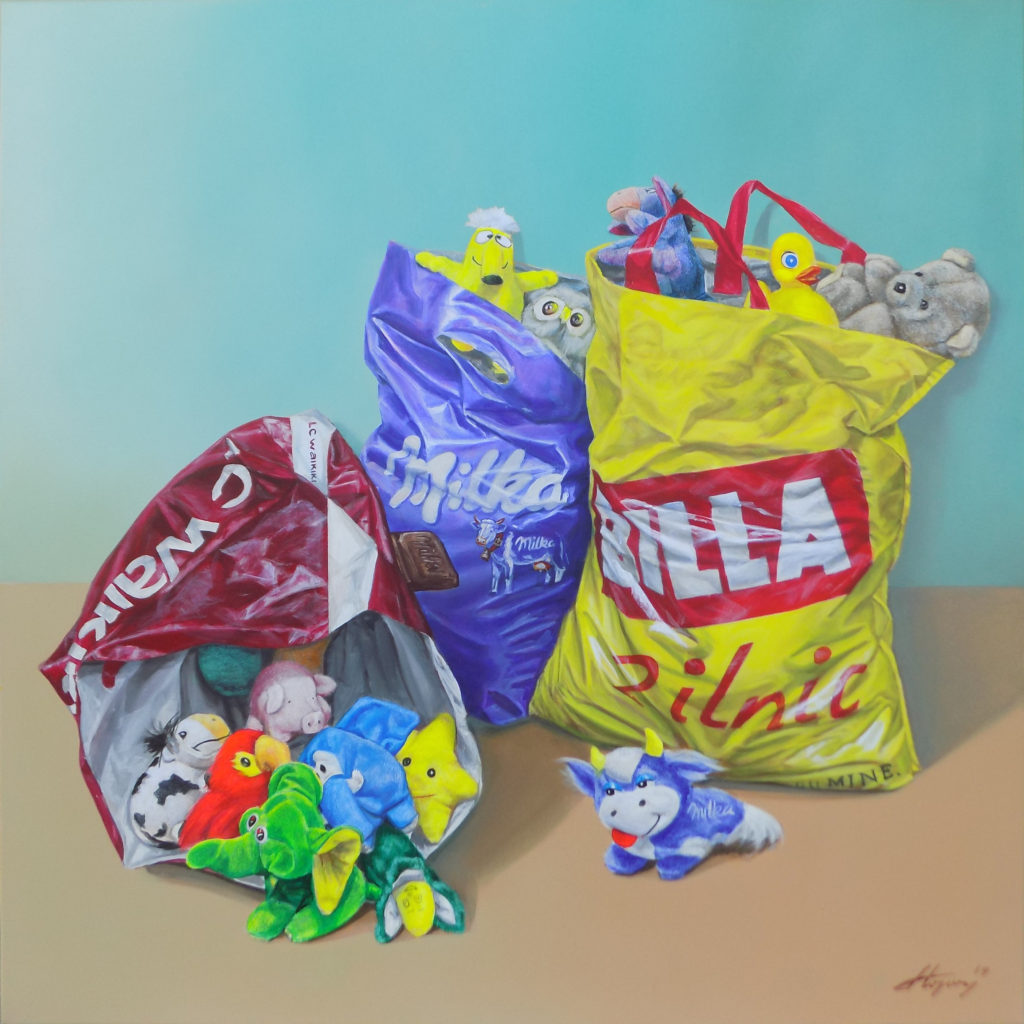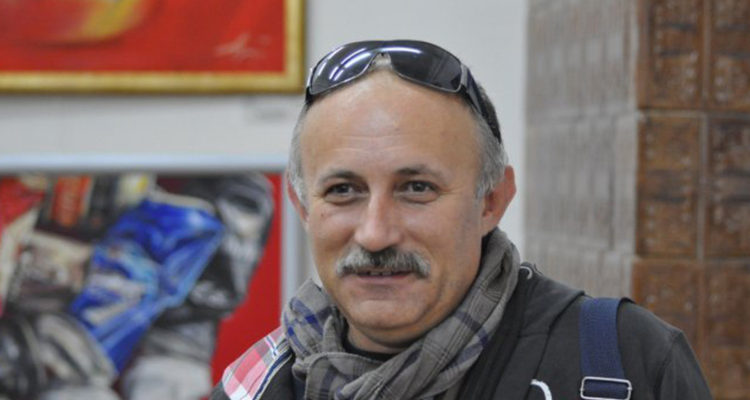“The artist shares his vision of the world…”
Paul Zimmerman in conversation with Dorel Topan
Paul Zimmerman: Congratulations on your current exhibition in New York. Tell us about your paintings for this exhibition.
Dorel Topan: The New York exhibition showcases one of the series addressing topics of my concern. I generally paint consumer goods, as a result of the current impact of the consumer society on post-communist countries. The dolls reflect the emotional, the utmost positive emotional part, somehow a search for an ingenuous, naive emotional state.
PZ: What is the most challenging aspect of your work?
DT: I am very keen on the realistic rendering of objects and the relationships between them, a fact determined by my passion for contemporary realistic painting influenced by hyperrealism and the popularization of photography to the level of the individual.
PZ: What is your artistic process? How do you create your paintings?
DT: My connection to the objects is the most important. The process of choosing them has an importance of its own, being in connection with the object of consumption, in this case the dolls. Premeditation is
always essential in my compositions. I work on the computer with the photos, I elaborate everything and preview it, but all of it is handmade. Drawing is as important as color the entire process being based on
many years of experience and research on perfecting my technique.
PZ: Do you have any particular goal in mind when your start a new piece?
DT: When starting a new work, I try to meet the visual needs of the specialists, but first of all the needs of the public. Usually either my objects tell a story that
can be put together by the viewer, or the new work is part of a series where the pieces support one another.
PZ: How do you know when the painting is finished?
DT: For a long time, I had the naivety to believe that a painting can be finished at some point. Now I think I will never be fully satisfied with the finality of a piece, therefore there are paintings in which I intervene after a while – even after some years – or works that I completely redo if there is an element, a context or anything else I don’t like anymore.

PZ: Has your practice changed over time?
DT: I practiced drawing for a long time, especially in charcoal. I practiced oil painting until twenty years ago, but acrylic paints were a revelation to me, due to the special brightness of the color tones, the rapid pace of work it allows, and I realized that this technique is best suited to the contemporary imagery, influenced by advertising in general and by consumer object design.
PZ: Which artists are you most influenced by?
DT: Pop artists, particularly Andy Warhol facilitated my fascination for consumer objects. I am fascinated by
the obsession that hyper realistic painters have with reality and also with their repertoire. I admire Monet’s paintings and, equally, Dutch and Flemish masters of the 17th Century.
PZ: How would you define art?
DT: Art is, in my opinion, an exclusively human field, which involves communicating sets of messages conveying symbolic values, the most humane and free way of knowledge and self-knowledge though which the artist can leave his imprint. The artist shares his vision of the world, of his time, discovering and communicating emotions, sensations, ideas.
PZ: What are you working on now?
DT: “Playing” with dolls remains one of my artistic concerns. At the same time, compositions with harlequins, puppets and jesters are of interest to me for rendering the condition of the individual in a world of manipulation. Beyond the colorful appearance of the harlequins and their artificial beauty, lies a mystery, which I hope the viewer can discover and with which they can identify.
PZ: How does the pandemic influence your work and sensibility?
DT: 2020 was a year during which, aside all the concerns, first of all, during the isolation I had time to settle my thoughts and to relate to my career so far. I think the pandemic has drawn our attention to the fragility of the human being and I hope it will me us more solitary. I strive not to abandon finding joy in objects that I find dear, although there is a lot of hypocrisy in the relationship between the individual and the consumer goods. I will continue to paint just as colorful and maybe my work will bring a bit of joy in a sea of pessimistic art. Sometimes it’s a good thing to enjoy your accomplishments and in this sense, the images of the Artifact Gallery exhibition made me very happy. I was also thrilled to see that I have a constant admiring audience on social networks.
